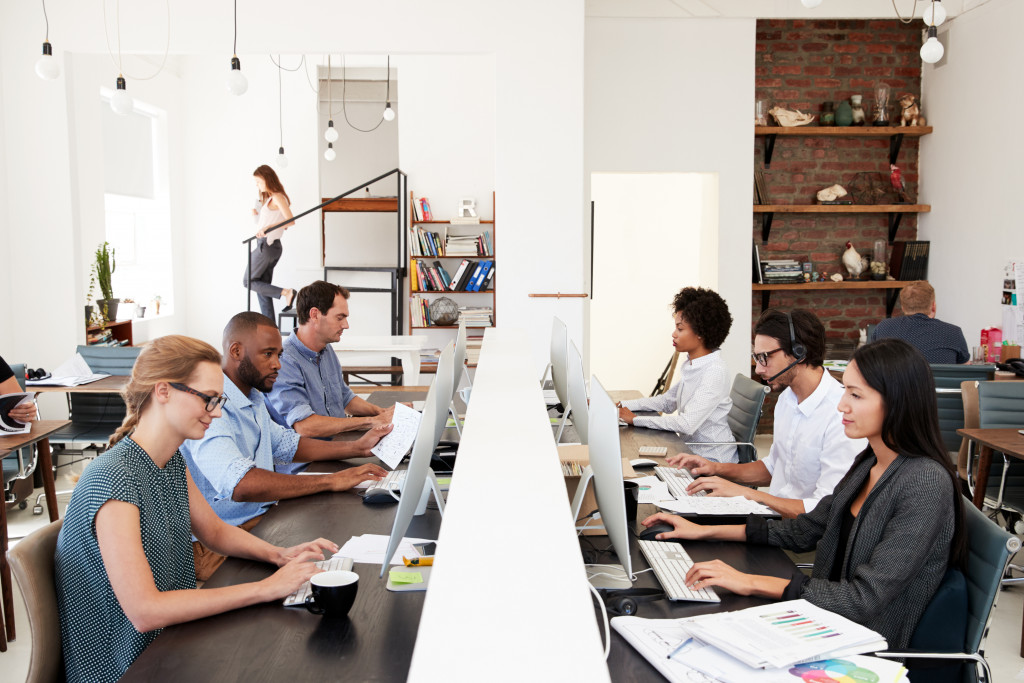The COVID-19 pandemic has created long-lasting effects on office workers in terms of performance, productivity, and health. As pandemic restrictions ease, many are expressing their dismay about the idea of returning to work.
During the lockdown, employees enjoyed the luxury of working privately in the comfort of their homes. Of course, it feels different when you’re working within your comfort zone, and everything you need is accessible, from water and space heaters and your pets to your favorite blanket and the kitchen fridge.
Today, many refuse to give up that privilege in exchange for returning to open work layouts. This article will take a deep look at the dark side of open office plans and why employers should shift away from this type of office layout.
Distracting noise
One of the biggest enemies of an open office plan is the noise. An open office is often filled with the sound of employees talking, music playing, people on the phone, chatters from the nearby meeting room. Not to mention, the background noise of printing machines, keyboard typing, and all the ambient sounds of a typical office environment.
Studies show that people lose more than 86 minutes each day because of noise distractions. While any form of noise distracts workers by harming their productivity, intermittent speech is the worst kind of noise that ruins everyone’s concentration. Intermittent speech refers to the fragment of conversations you randomly hear from your surroundings. It can be the voice of someone speaking through a phone or the soft chatters coming from the other side of the office door.
Experts say that intermittent speech can worsen performance than any type of noise. In fact, a person can be 66% less productive if exposed to a nearby conversation. In an open office, these people find it difficult to perform cognitive tasks that require deep attention or focus.
Privacy concerns

Open offices eliminate the need for privacy, which significantly affects employees’ performance and concentration.
Employees require different levels of privacy to feel at home and welcome in the office. Sadly, open offices prioritize interpersonal communication over personal privacy. As a result, employees can’t respond to private conversations or sensitive messages if people keep passing by. If your computer screen is constantly being seen, this can lead to false productivity and feelings of paranoia. The lack of privacy makes people feel they’re always being watched, creating feelings of anxiety and tension.
Additionally, an open office puts pressure on employees to look productive, which actually creates an opposite effect.
There’s also the issue of spatial ownership and distribution in an open office. People feel like someone is invading their privacy because of their proximity to coworkers. A shared desk can be invasive, especially if you’re talking to someone in the presence of another coworker.
Employees deserve short breaks to recharge by playing card games on their phones or sending a quick message to their loved ones. But if they feel their coworkers and managers are always behind them, they might feel pressured to appear busy and productive.
Security issues
In an open office, people come and go to your area all the time, whether they’re your manager, coworker, customers, or the maintenance staff. This raises security issues, especially if your belongings are always out there in the open for everyone to see.
Since you’re always focused at work, it’s impossible to know every person who walks by your desk, so there’s no way to be certain that your items are safe. If your wallet or phone goes missing, you’ll start to make suspicious about potential culprits, including those who are actually innocent.
Open offices breed an environment of mistrust among coworkers, making it difficult to establish trust and healthy connections. This affects the ability of your teams to collaborate effectively.
Spread of infection
Workplaces are often responsible for the spread of illness during peak flu and cold seasons. Since everyone is grouped together in one space, this further intensifies the growth and spread of germs and viral illnesses across the office floor. Even a simple cough or sneeze and exchange of personal items within a communal area is all it takes to infect everyone in just one swoop.
A study by the University of Arizona revealed that when one employee comes to work sick, around half of high-touch surfaces, such as the desktop, telephone, doorknob, tabletop, office fridge, and lift buttons, will be infected with the virus before the day ends. The infection rate will increase significantly during the flu season.
From the discussion above, it would be logical to say that open office plans are ineffective, unhealthy, and unproductive. As employees return to work, this serves as a wake-up call for employers to redesign their offices to make sure their office layout won’t affect their team’s performance—and, more importantly, their health and well-being.

